February 2 Program: The Chesapeake Bay Impact Structure and its Blasted Fossils
Synopsis by Andy Thompson, MSDC Secretary
Cindy Schmidtlein, MSDC’s Vice President for programs, introduced Dr. Lucy Edwards, with whom she worked for many years. Such close collaboration provided insights that Cindy was kind enough to share with the MSDC audience.
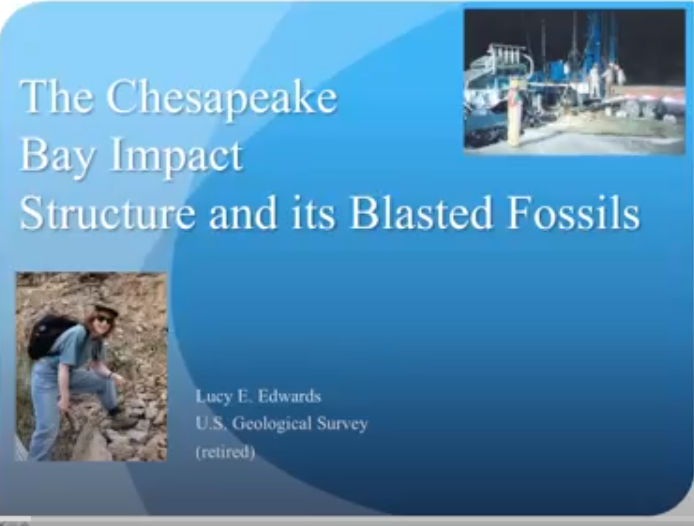
Introduction of the Speaker
“Dr. Lucy Edwards is a scientist emeritus at the Florence Bascom Geoscience Center at the U.S. Geological Survey where she has worked since 1977. She is a paleontologist, specializing in Palynology, studying dinoflagellates (a type of algae – think Red Tide) and she studies their fossil cysts for what they reveal about the time and environment of deposition and how they came to be preserved in the fossil record. She also specializes in stratigraphic nomenclature and methods of stratigraphic correlation.
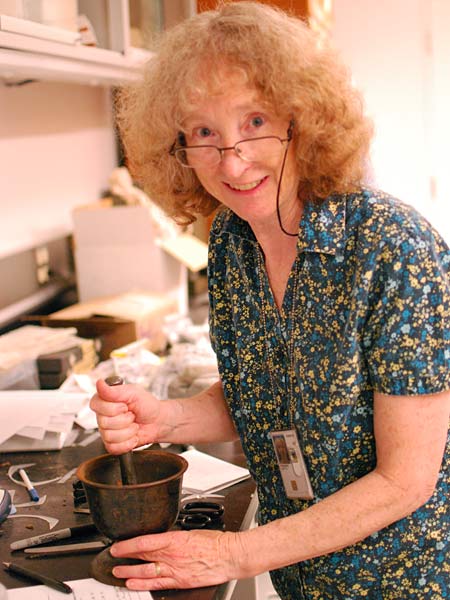
“I met Lucy in 1981 and was her lab assistant for many years processing her samples. The lab was also shared by the fossil pollen investigators, and Lucy's quip to them was: ‘My fossils lived, where all of your pollen died.’
“Her talk will include an introduction to her favorite fossils, salient facts and speculations about the Chesapeake Bay impact structure, and personal tales of experiences studying this buried feature.
“Thank you so much for giving us this treat, Lucy, and without further ado, I introduce to the club Dr. Lucy Edwards.”
Introduction to the Program
Lucy’s first slide, the title of her program, indicated she indeed would talk about the “Chesapeake Bay impact, its Structure, and its Blasted Fossils.” She began by sharing a little about herself and said that she hoped that we, her audience, would share her sense of humor which is evident in the following poster’s accompanying caption and in her reference to a popular movie.

Continuing in that vein, she noted the popularity of the recent film “Don’t Look Up,” about which, she said, her friends in the scientific community of crater-researchers have been talking and in which they find some humor. (The main characters are astronomers alerting everyone to an imminent incoming meteor while science deniers chant “Don’t look up.”)
Lucy provided an outline containing five points for her presentation:
· Some information about herself
· A bit about the Chesapeake crater
· Models of how craters are formed
· FAQs about the Chesapeake crater
· Tales of how we fit it all together.
Lucy's Scientific Focus and her Favorite Dinoflagellate Cyst
Lucy studies fossil algae, specifically fossil dinoflagellate cysts. She pointed out that “dino” (Greek) here refers to the whirling motion of the flagellate cysts, which is not to be confused with the “dino” of dinosaurs, terrible lizards.
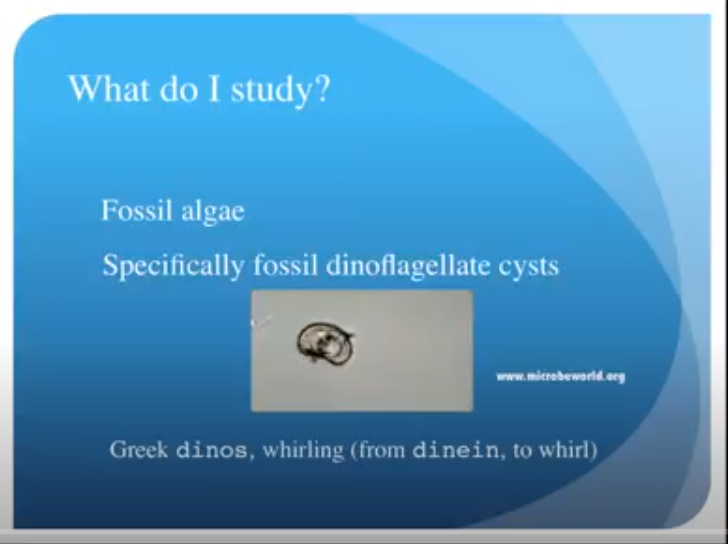
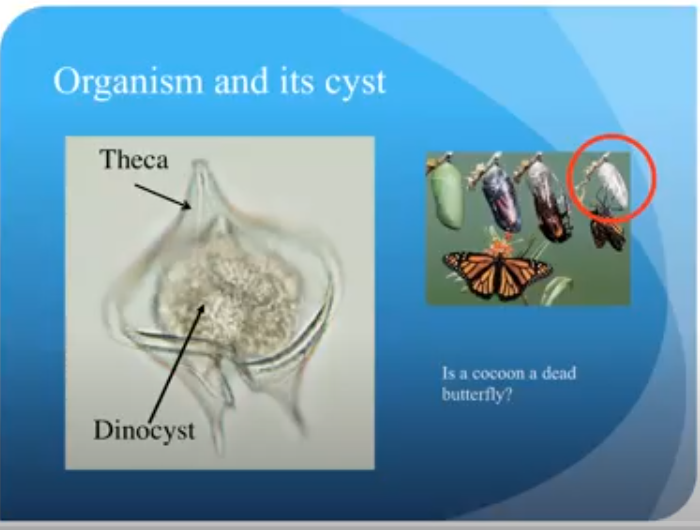
These algae, dinoflagellates, while swimming around and engaging in reproductive activity, formed hard shell cysts that later are often found in the sediments as microfossils, which Lucy finds and studies. She compared the cysts to a chicken’s egg shell, which is not a chicken. Similarly, the cysts are not the dinoflagellates because the organisms “left and swam away” and over time the cysts fossilized and awaited discovery by researchers.
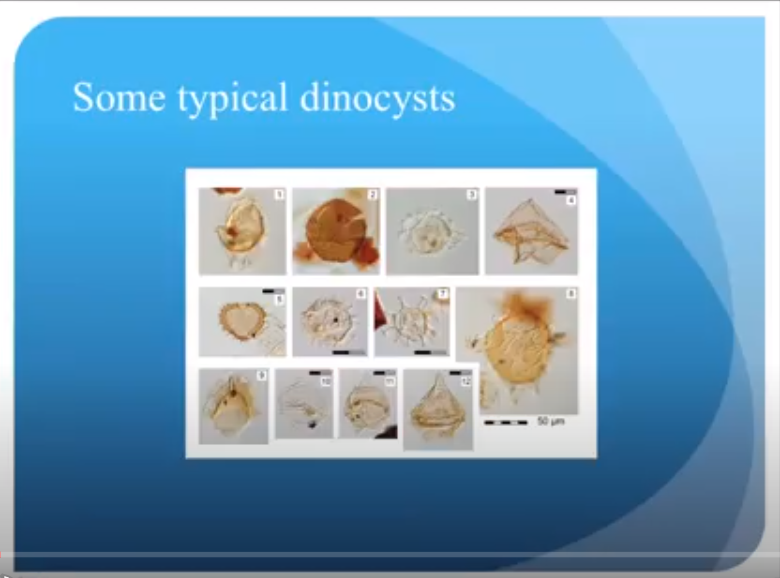
Dinocysts have diverse shapes but all are extremely tiny, about the size of the smallest dot made by the sharpest pencil. Each of the above typical examples has a tiny opening or door through which the dinoflagellates escaped.
Which, she asked, is her favorite specimen? “Edwardsiella sexipinosa,” she answered. During her research, she had discovered about a dozen of these specimens. With no concern about naming the specimens, she published her findings in a scientific journal and gave no thought to exploring a proper name. However, about a decade later, a graduate student discovered hundreds of the same specimens and gave them the genus name Edwardsiella in honor of her having made the original discovery.
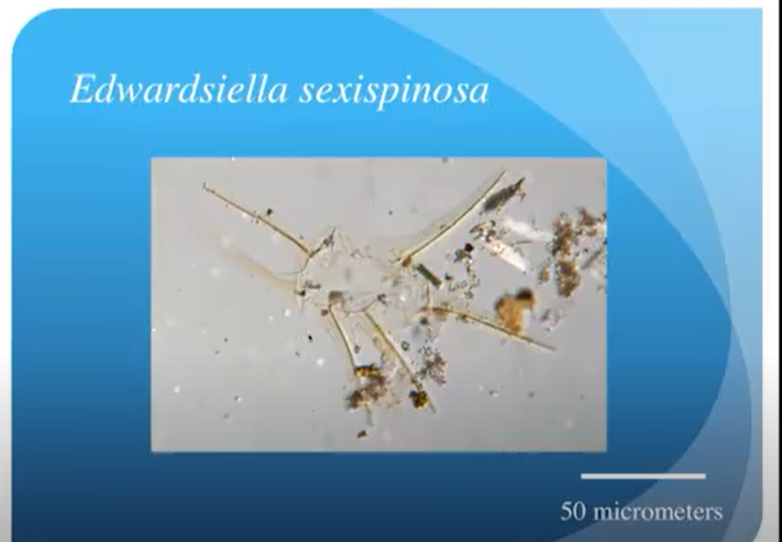
The student invited Lucy to provide the species name and in light of the specimen’s six spines illustrated above, Lucy suggested “sexispinosa,” Latin for six-spines. That became its official scientific name and is now Lucy’s favorite dinoflagellate.
A Bit about the Chesapeake Crater
The deepest drill site, pictured below, was initiated in 2005 and yielded intact core samples to a depth of over one mile.
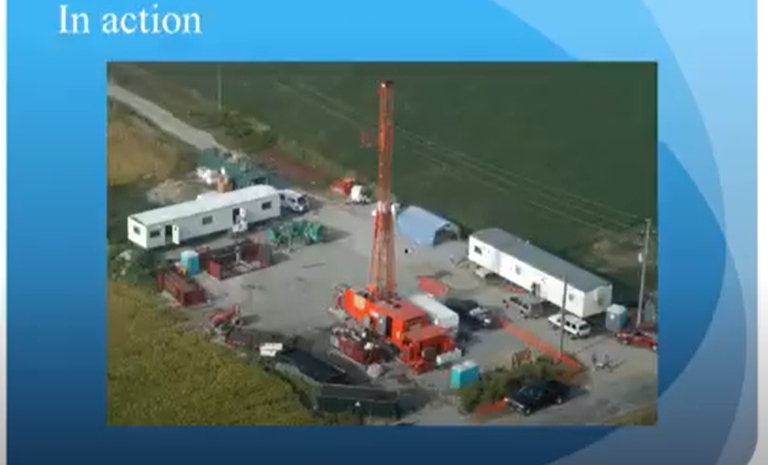
“Drilling is easy. Coring is hard,” she noted. The three inserts pictured below show some of the drillers’ labors on the drill tower, carefully unpacking the cores and boxing them for transport to the lab. Clearly, they had extensive core samples to examine.
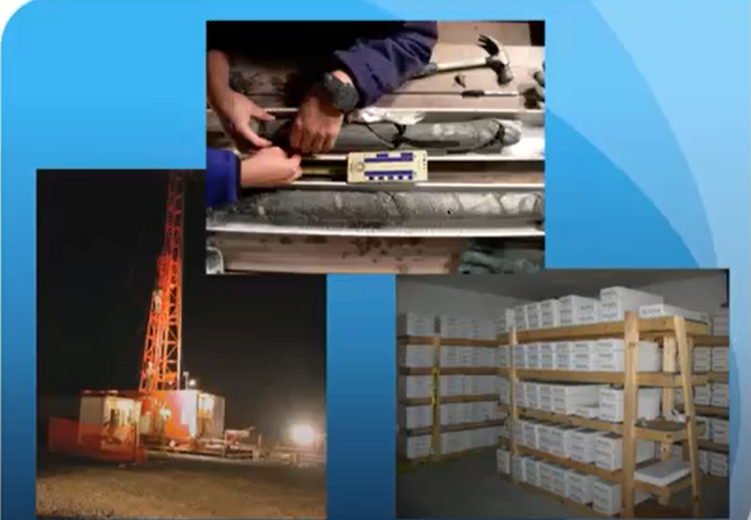

David Powars, pictured with Lucy Edwards in the Washington Post’s October 23, 2005 story shown in preceding link and below, said he believed the site had been impacted 35 million years earlier. Both researchers worked for the USGS, and collaborated on this project.
Lucy told her MSDC audience that Powars was the actual scientist credited with determining that this was definitely an impact site. Prior to their work, the scientific community had not yet gathered sufficient information to arrive at that conclusion. That discovery was based on the analyses of the data from the core drillings.
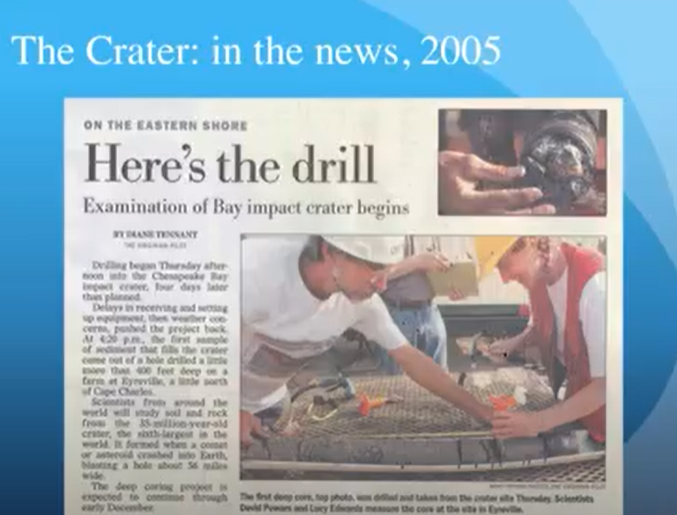
From then on, the world knew about the crater. “It’s there” although totally buried. Speaking as a paleontologist, Lucy said when the impactor struck during the late Eocene, 35.5 million years ago, it hit the shallow part of the Ocean. Many fossils already had been there for tens of millions of years.
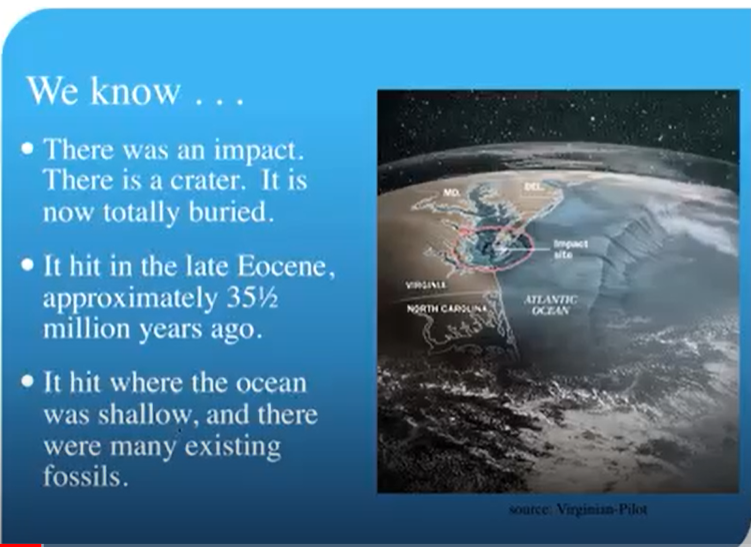
For those who want more information about the crater, she provided the following website: The Chesapeake Bay impact structure (usgs.gov).
The factsheet was coauthored by David and Lucy, with the help of additional colleagues. In two pithy pages, the factsheet discloses some of the salient findings made during the decade-long study of the 2005 drilling and core recovery.
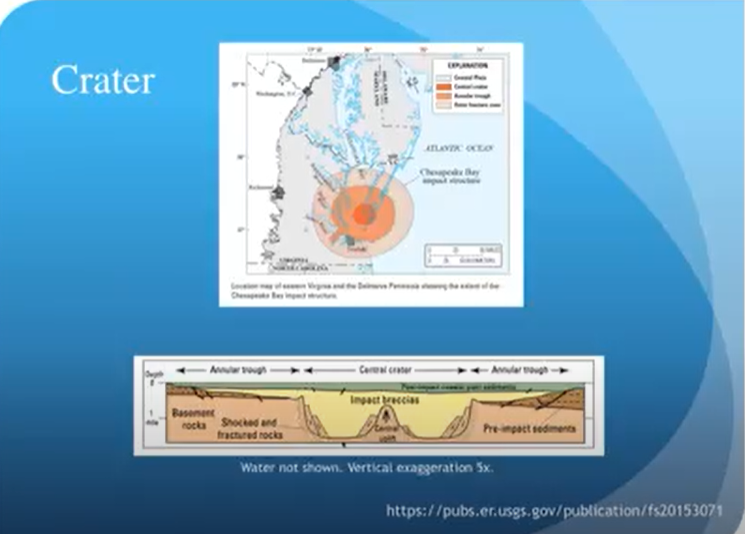
She then described the structure of the crater which is similar to the shape of an inverted sombrero (jagged black line), as illustrated below.
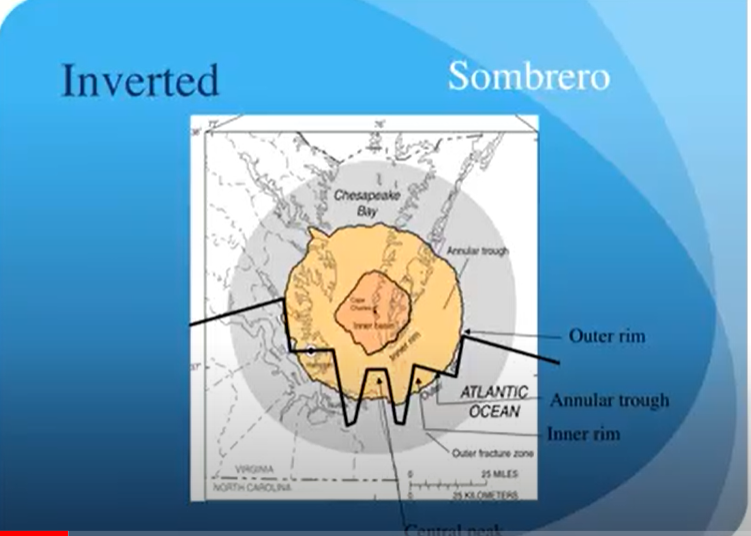
Models of How Craters are Formed
The next phase of Lucy’s presentation focused on models of the effects of an impact and how the earth’s water, mud, and hard rock respond. For that, she showed a video clip which readers of this synopsis should view to get a comprehensive portrait of her excellent presentation.
The YouTube link at the end of this synopsis also takes you to the entire recorded program. Skip ahead 15 minutes to view the short clip of the effects of an impact.
The impactor initially pushed the ocean water out of the way. When the water returned it did so as a slurry of mud, and filled in the empty crater. That material (shown as brown), Lucy pointed out, provided her with the broken-up debris in which she found and analyzed her shattered fossils.
Below is a snapshot of a simulated moment, a few minutes after the initial impact, when a central, vertical peak had formed and before all the ocean and mud resurged, that is, rushed back into the initial crater cavity.
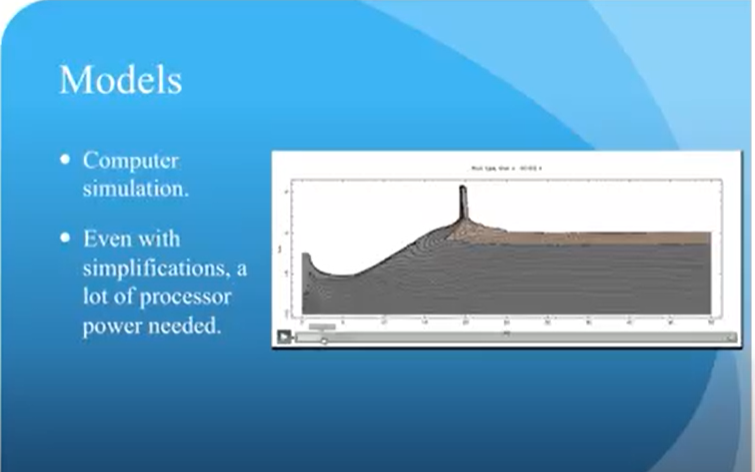
Lucy then demonstrated how, using household materials such as cake, non-dairy topping, and an orange, anyone could simulate what it looks like when an impactor destroys a pound cake. Besides providing fun for children’s camp or classroom activities, it makes a serious point for students of crater analysis.
She told the story of how, during her earlier research, a more junior researcher brought crater samples to the lab for Lucy to analyze. She said she was shocked and annoyed to find he had unknowingly provided her with rocks from about five different time periods. What she had initially expected was similar rocks and specimens from one time period.
After trying an experiment similar to the video demo, she learned that having fragmented rocks from a mix of different time periods was exactly what one should expect when working with rubble from a crater. Lucy’s once neatly shaped pound cake model with creamy icing, which was then demolished by an incoming orange, resulted in a jumble of backfilled “crater debris” from diverse ages of rocks and fossils. She concluded, that was exactly what one should expect to find in analysis crater research.
FAQs about the Chesapeake Crater
The third portion of Lucy’s presentation then turned to frequently asked questions (FAQs) such as whether the Chesapeake impact killed the dinosaurs. As noted in the slide below, she said dinosaurs still inhabit our earth in the form of birds. But the non-avian dinosaurs were killed in the prior impact, in the Yucatan, 30 million years earlier. Lucy’s Q and A session, in which she both asked and answered questions, explained a lot more detail and gave helpful illustrations. She provided much more than yes-or-no answers.
For example, she raised the question of whether the Chesapeake impactor was an asteroid or a comet. Simply put, “We don’t know.” Her point was that scientists do not know everything. “That’s one reason why we study it.” The same tentativeness is appropriate, she noted, for additional questions about the size of the impactor, how much damage was done by it and by prior impactors, and the odds or timing of future impacts.
How it All Fits Together
The fifth and final area Lucy addressed was about how she, as a paleontologist, has interfaced and worked with the Chesapeake crater research. She said that when she earned her Ph.D. in Geological Sciences in the late 1970s, there was no way she could have imagined that she would spend her career with the USGS working on the Chesapeake Crater and its fossils.
Lucy used a series of “Edwards Illustrated Fairy Tales” to summarize her experience. One noteworthy transition she made over the decades was overcoming her disdain of drilled core samples containing a slurry of broken rocks with five different geological ages (you can interpret the findings as any arbitrary age you want). In more recent decades she transitioned to and learned to love analyzing such “kitchen sink” samples of crushed rock and diverse ages. She recalled the very day those diverse and crushed rocks helped David Powars, while working with Lucy in her office, to conclude that the eastern part of Virginia was indeed the western edge of a crater impact site. But she reiterated, “He’s the one who went out, did the field work and made the discovery.”
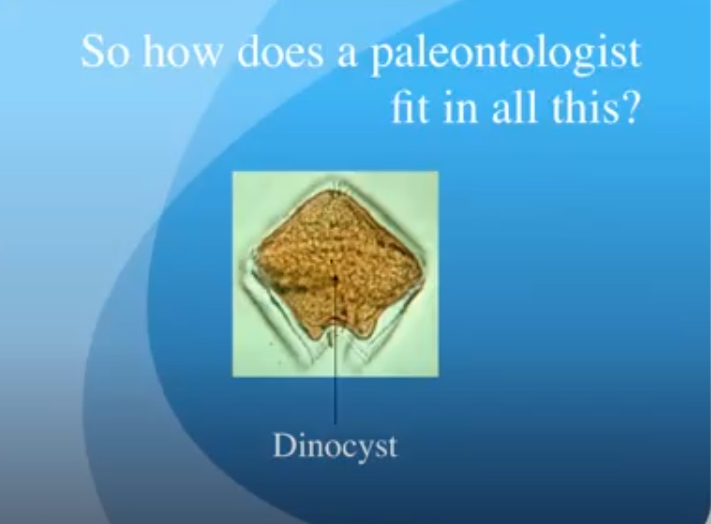
Her second tale described her work making a similar transition toward loving to work with fractured dinocysts. Initially the fossilized dinocysts recovered from the core samples were in very poor condition: bent, folded and partially destroyed. “They were not supposed to look like that,” she initially thought. Over time, she realized that the dinocysts don’t do well with heat. The impact generated very high temperatures. So, the normal cysts shown below do clearly contrast with the damaged and distorted fossils shown below. She realized the damaged cysts are very important, in part because their having curled and melted are the tell-tale signs typical of a crater impact site.
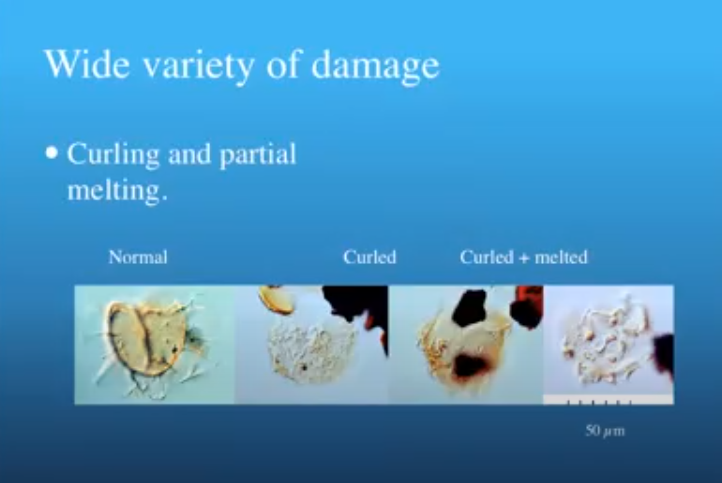
One day in particular, she said, was a very memorable and important in Lucy’s wonderful career. If you want to discover why, treat yourself to watching the entire recorded presentation.
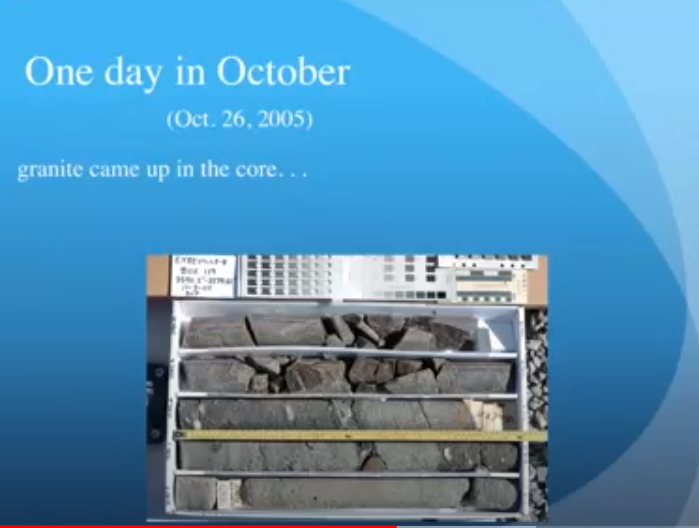
Drilling through granite was slow and expensive, and some folks wanted to stop the process. But scientists believed staying the course would lead to discoveries.
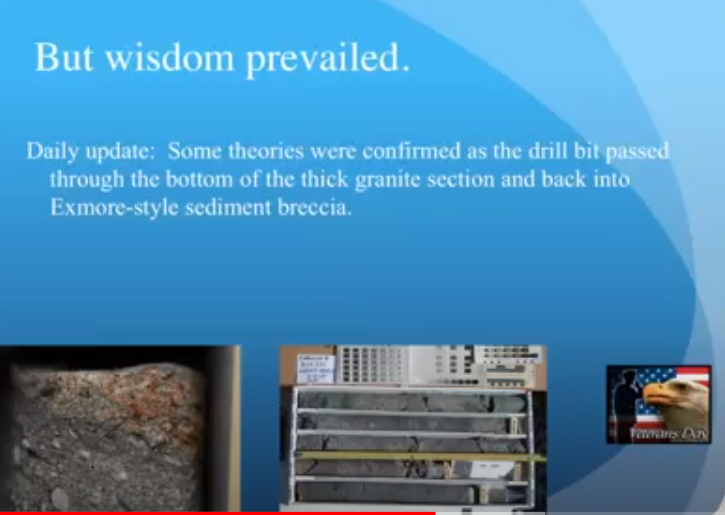
If you want to learn more about the mineral findings from this deep core drilling, view the recorded presentation and listen to Lucy’s third “tale.” She said this story would be the most interesting to mineral collectors, more so than her exploration of the “exotic” algae fossils she described earlier in her presentation (above). She noted that granite would be of strong interest, as well as glassy tektites and shocked quartz. What the scientists discovered as they drilled deeper into the impact core, into and beyond the granite, helps pull together much of the research.
Lastly, upon concluding her presentation, she opened the floor so MSDC members could drill down and gain Lucy’s help answering their own questions which included how the impact changed Virginia’s geology (faulting?), the height of the resulting tsunami (Mt. Rogers?), the difference between drilling and coring, discovery of tektites and shocked quartz, the accuracy of impact models, their oblong shape, Midlothian outcrops and was there any connection with older Marlboro clay?
The purpose of MSDC’s newsletter providing readers with a portion of Lucy’s talk is to share her scientific wealth and give readers the chance to experience her full, recorded presentation. Watch the entire recorded program. You will like it.
Here’s the link: Chesapeake Bay Impact Crater & Its Blasted Fossils - Dr. Lucy Edwards - MSDC meeting Feb. 2, 2022 - YouTube (length 1 hour 15 minutes). Audio of the intro is imperfect but the text is included, verbatim, in the above report. The audio for Dr. Edwards is fine.)
